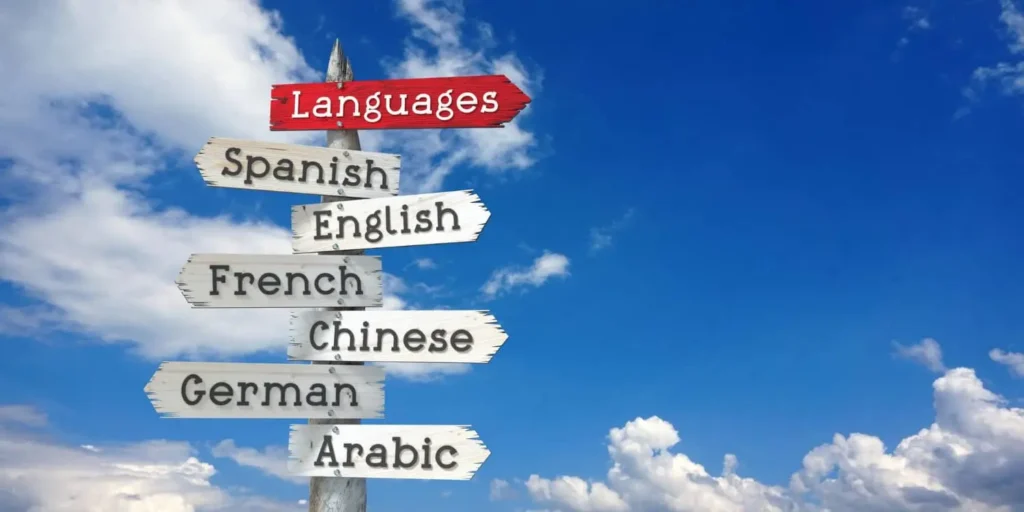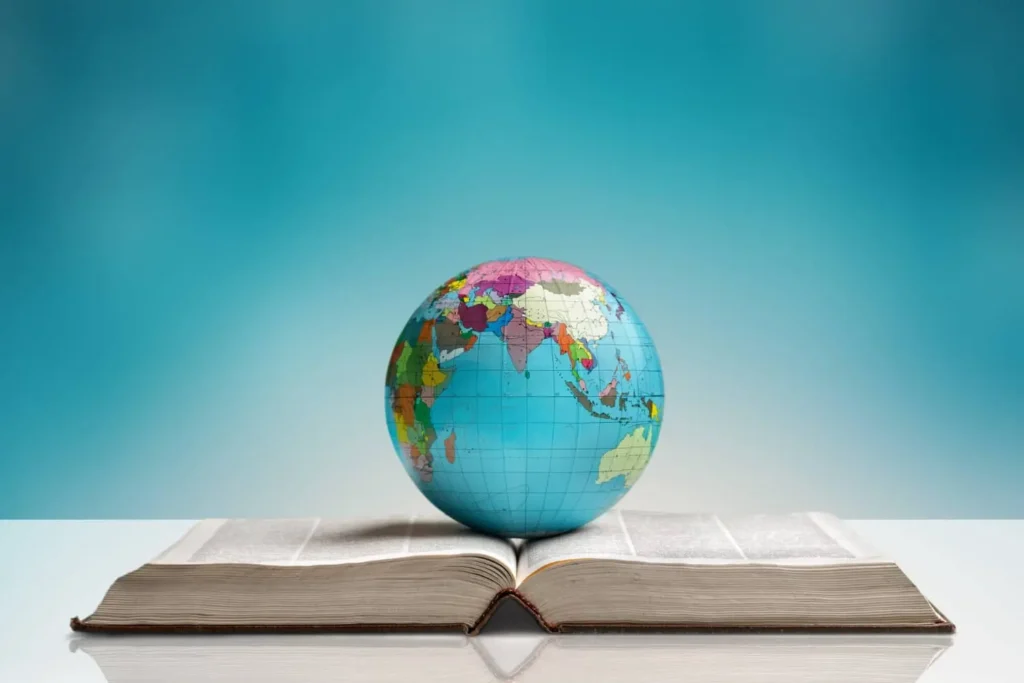
It is thought that Language originated when early humans started gradually changing their primate communication systems to structured languages. Language is simply a system of communication that consists of a set of sounds and written symbols that are used by the people of a particular country or region for talking or writing.
Languages began thousands of years ago and determining which is the oldest language in world is highly debated throughout the world. However, linguists revealed that the following 5 languages are among the oldest languages in the world , legal Translation Dubai will talk about them in detail.
Contents
The five oldest languages in the world
The five oldest living languages in the world are Arabic, Greek, Tamil, Latin, and Farsi. These languages have been spoken continuously for thousands of years and have rich literary and cultural traditions.
1- Arabic Language
Exploring linguistic origins raises the question: Is Arabic the oldest language? While Arabic holds a significant historical role, determining the absolute oldest language is complex. The diverse evolution of languages worldwide underscores the richness of our shared linguistic heritage.
Arabic is one of the oldest spoken languages and it carries a great history and civilization behind it. The earliest example of an Arabic inscription dates back to 512 CE. At present, around 300 million people speak Arabic around the globe.
Arabic belongs to the Semitic language family which includes Aramaic. It is the most commonly spoken Semitic language. The Arabic language can be divided into two versions Modern Arabic and Classical Arabic.
Classical Arabic is the language of the Quran, which is the sacred book of Muslims. Arabic is the official language of Egypt, Saudi Arabia, the UAE, Qatar, Syria, Lebanon, Kuwait, Oman, and many other countries. There are many different dialects and branches of Arabic.
Also, Arabic is the official spoken and written language in UAE and all types of documents with any language have to be translated by a certified translator in UAE. Alsun Legal Translation in Dubai is known for being a legalised translation provider in Dubai including all areas such as Business Bay, Al Barsha, Bur Dubai, Satwa, and other locations.
2- Greek Language
The Greek language dates back to around 1500 BC. Though it has evolved considerably from its ancient version it is still spoken by nearly 13 million people. The modern form of Greek is the official language in Cyprus and Greece. It is also an official language in the EU and is spoken in Greek communities around the world and in Turkey, Albania, and Italy.
Over a thousand years ago, some of the world’s most respected scholars and philosophers used to communicate in Greek. Many of the foundational documents in Western philosophy, like the works of Aristotle and Plato, logic and mathematics, astronomy, and other branches of science were originally written in the language.
The Greek alphabet originated from the script used by the Phoenicians. Later, it became the source of the Gothic, Coptic, Armenian, Cyrillic, and Latin systems of writing.
Also know: 8 advanced Translation Tools
3- Tamil Language
Tamil, one of the oldest languages in the world, originated in the southern part of the Indian subcontinent. Belonging to the Dravidian language family, it started being spoken around 300 BC.
Throughout its long history, Tamil has left its mark on various aspects like art, culture, and academia. Its literary heritage includes classical works, modern literature, and poetry.
With a rich tradition spanning over two thousand years, Tamil has influenced southern India, shaping its cultural and intellectual landscape. Nearly 80 million people in southern India, Sri Lanka, and Singapore speak Tamil in different forms:
- Modern Tamil.
- Classical Tamil.
- Colloquial Tamil.
This language shapes the cultural and intellectual aspects of South India. Its script, adorned with elegant characters, serves for writing in Tamil and other Dravidian languages, contributing to a broader linguistic influence.
4- Latin Language
The earliest appearance of this language can be traced back to the days of the Roman Empire, which was formed around 75 BC. The Roman Empire elected to make Latin its formal language, making it an important language at that time.
Latin was the origin of all the Romance languages – Spanish, French, Italian, Portuguese, Catalan, and Romanian and many words today, including several words in modern-day English. Latin is still the official language of Poland and Vatican City. Latin is taught at several higher education institutions around the world.
Read about: English and Arabic legal terms
5- Farsi / Persian Language
Farsi, or Persian, is a language that belongs to the Indo-European family. It started in Iran and remains the official language there. Additionally, it’s spoken in nearby places such as Afghanistan and Tajikistan.
Farsi is the direct descendant of the Old Persian language, the Persian Empire’s official language. Persians emerged sometime around 500 BC. Modern Persian emerged around 800 CE and has changed sparsely since then.
The language has a rich history, with its literary works considered one of the four main bodies of world literature. Renowned poets like Rumi, Nizami, and Daqiqi have profoundly impacted generations.
Interestingly, Farsi extends beyond its home countries. Due to diaspora communities, it’s spoken in various nations worldwide. Notably, there’s a significant minority in Uzbekistan and diaspora communities in Australia, North America, and Europe.
More than 110 million people speak the language. Though it is almost the same with little variation, it is called Dari in Afghanistan and Tajiki in Tajikistan due to political reasons.
Also know: Effective communication skills
The Importance of discovering the Oldest Languages in the world

Turning our attention to studying the oldest languages in the world, we gain valuable insights into our past. By delving into these ancient languages, we uncover clues about the evolution of human communication, social structures, and cultural traditions. These linguistic treasures provide a unique window into early human migrations, as the features of languages often reflect historical events and shifts.
Moreover, the oldest languages in the world serve as living archives of human history and wisdom. We find preserved knowledge about ancient technology, environmental connections, and philosophical beliefs within each old language. They act as custodians of our collective heritage, allowing us to connect with the ways of our ancestors.
Exploring these old languages deepens our comprehension of our journey on Earth. It unveils the diverse methods we’ve devised to articulate our thoughts, experiences, and ideas throughout human history.
Conclusion
Several more languages could still make it to this list. Such as Sanskrit which dates back to 200 BC and has influenced many modern European languages and Chinese which is more than 3,000 years old and now is the language with the most number of first language speakers. The languages are many and we can count on them as the world is becoming wider than in the past.
Share with us an old language that has survived and is still in use up to date.
Uncover the beauty of the world’s oldest living languages. Explore their rich heritage and cultural significance. Contact us today to embark on a linguistic journey through these ancient languages.
FAQs
Which oldest languages in the world are still spoken today?
Some of the oldest languages still used today include Tamil, Sanskrit, Greek, Hebrew, Chinese, Arabic, Coptic Egyptian, Aramaic, and Persian.
- Tamil is known for its ancient roots.
- Sanskrit has a rich history in India.
- Greek has been spoken for centuries.
- Hebrew is linked to religious texts.
- Chinese has a long linguistic heritage.
- Arabic is prominent in the Middle East.
- Coptic Egyptian has historical significance.
- Aramaic has ancient roots in the Middle East.
- Persian, with its long history, completes the list of enduring languages.
These old languages connect us to the past and continue to be spoken in various parts of the world.
What are the five oldest European languages?
The five oldest European languages are Greek, Latin, Basque, Lithuanian, and Irish Gaelic. Despite being considered a dead language, many still study and speak Latin fluently.
What is the most widely spoken language in the world now?
Mandarin Chinese is the world’s most spoken language, boasting 920 million native speakers. However, when considering native and non-native speakers, English takes the lead with a whopping 1.5 billion speakers.
What is the total number of languages globally?
Ethnologue reports 7,168 living languages in the world today. Some languages have millions of speakers, while others have only a few.
Why is it a must to preserve endangered languages?
Saving endangered languages is necessary because they hold the key to preserving cultures and identities. When a language fades away, it takes a unique way of seeing the world and valuable information about traditions, stories, and medicinal practices.
Additionally, endangered languages provide valuable insights into linguistics and cognitive science. They contribute to the rich tapestry of linguistic diversity. Regardless of its size, every language brings a distinct viewpoint and ideas about our shared world. Saving them is like safeguarding a treasure trove of unique perspectives and knowledge.